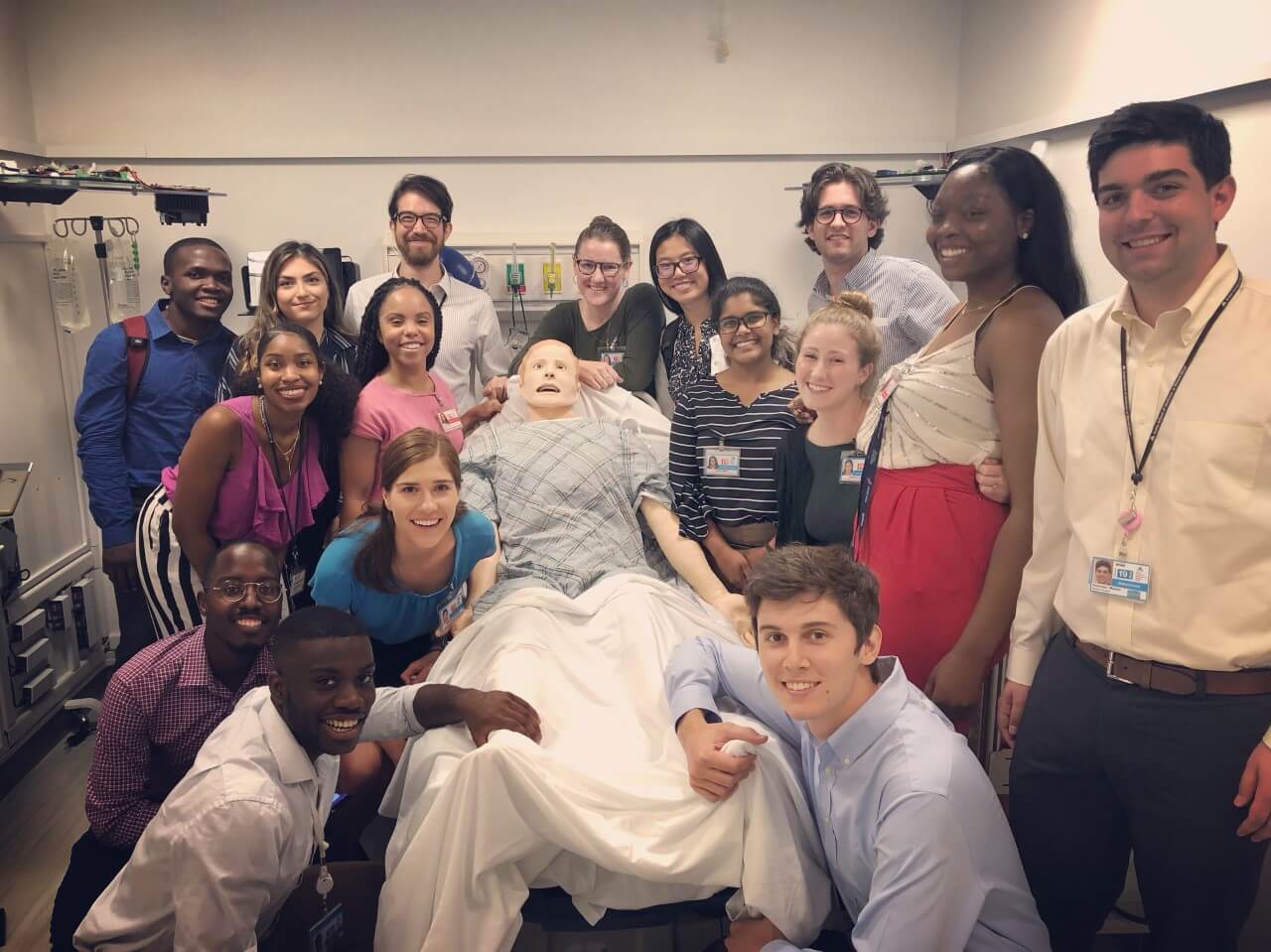A Summer Spent Researching at Mt. Sinai's Emergency Medicine Research Training Program
Benjamin Araki from TouroCOM Middletown Participated in Research Studies about Non-Lethal Opioid Overdoses, Capacity to Consent in the Emergency Room, and Universal Screenings and Risk Factors for Hepatitis C

TouroCOM Middletown student Benjamin Araki spent his summer in The Icahn School of Medicine at Mount Sinai’s Emergency Medicine Research Training Program. The prestigious program pairs medical students with researchers from Mount Sinai and provides didactic lessons dedicated to designing research projects, ethical considerations of research and emergency clinical medicine. Students are also expected to present on their research progress each week and on their findings at the end of the program.
- Assessment of Syndromic Surveillance on Non-Lethal Opioid Overdoses
Syndromic surveillance is the method of relying on detection of individuals and population health indicators before a confirmed diagnosis, i.e. the description of a condition put down in an emergency room before confirmation. Typically, that data is then used to determine medical trends in the hospital. During the summer, Araki looked at over 500 patient charts and assessed whether the criteria used for counting opioid overdoses was accurate. He analyzed the data and found that close to 30 percent of the cases described as non-lethal overdoses were incorrect. (Some of the corrections were miscategorizations: if a patient visited the ER with a complaint about the right eye, the patient’s chief complaint would be entered with the term as OD—Ocular Dextrus, which would then appear in the searches for overdoses, which also used the term OD).
The important part of the research project was to come up with an operative definition of an overdose. “Since the study is retrospective—reviewing past medical charts—I needed to assess whether or not the patient was a case of opioid overdoses through documented descriptions such as symptoms, vitals, and labs,” said Araki. “There’s no one test for all the opioid overdoses and certain opioids won’t show up on urine screenings. I had to assess if it was an opioid overdose based on how the doctors documented the case: depressed respiratory rate and heart rate, ‘pin-point’ pupils, pale skin, unconsciousness, etc.”
“Another indication was a reaction to Narcan,” said Araki. “Narcan is an opioid antagonist; if a patient is experiencing acute overdose, an administration of Narcan pushes them into withdrawal. If someone is unresponsive, they may wake up in a matter of minutes. People who are overdosing on other substances, like cocaine or amphetamines, won’t respond to Narcan the way most opioid overdoses do because it affects a different receptor. I compiled criteria to establish a more specific way of classifying opioid overdoses retrospectively.”
- Assessing the Capacity to Consent of Patients in Moderate-to-Severe Pain
Araki’s second research project focused on patients’ ability to give consent under medium to high levels of pain in the emergency room. “The gist of the study was to assess if patients who are under moderate to severe pain are able to understand and give consent,” explained Araki. Araki and his fellow researchers visited the emergency room and spoke to patients about a hypothetical research pain study. “After we’d explain the research, we would ask questions about the different parts of the study to see if the patient had the capacity to understand a fairly complex study design.” The capacity was assessed using two different criteria that was developed to score the patient's overall understanding, which was then later compared.
“One of the goals of the study was to see if people—who were in acute pain and might need a procedure which requires consent—actually have the capacity to give consent,” said Araki. The accumulated data hasn’t been analyzed yet.
- Comparison of Hepatitis C Infection Risk Factors in the ED vs Other Populations & Assessment of Implementing Universal Screenings for Hepatitis C Infections
The third study Araki worked on was a survey-based comparison of Hepatitis C risk among people who present to the ER compared to other populations. This was done as part of a larger study focusing on the effectiveness of universal screening program in identifying more patients with Hepatitis C infection. Currently, only patients who meet one of the risk factors criteria established by the Center for Disease Control are recommended to screen for Hepatitis C. The criteria include being in the birth cohort between 1945-1964 and having risk factors, such as history of blood transfusions, history of IV drug use, or history of HIV infection.
“Our result was that if we’re only asking patients in those three categories, we’re actually missing a good amount of people who have Hepatitis C,” explained Araki. “We also found that the people who had those risk factors somehow seemed to be aware of their risk factors and tended to get screened compared to those who didn’t have the risk factors.”
Araki said that the screening was able to identify about 5% more people who were Hepatitis C positive using the universal screening. “If you extrapolate that to the entire country, it’s about 120,000 people who would be missed. That’s a lot of people,” said Araki. “New Hepatitis C infection has nearly tripled since 2010 and is one of the leading causes of severe liver issues like cirrhosis and liver cancer. The disease kills more people in New York State than HIV, despite being curable.”

